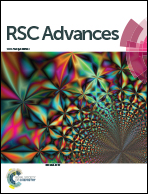Effect of meteorological factors on photovoltaic power forecast based on the neural network
Abstract
In this paper, the effects of meteorological factors (including air temperature, wind speed, and relative humidity) on photovoltaic (PV) power forecast using neural network models have been studied. The research is based on PV power data collected at Nanchang, China. Our results showed that prediction results of three neural network models were overall close to the experimental data. It indicated the accuracy of the neural network approach. The time–power curves showed that the prediction errors were relatively large for some time frames, especially at dusk. The SSE/MSE and the coefficients of determination analysis showed that the model including air temperature had the strongest correlation with experimental data than another 2 models including wind speed and relative humidity, which proves that air temperature is an important factor for predicting the output power of PV cells.



 Please wait while we load your content...
Please wait while we load your content...